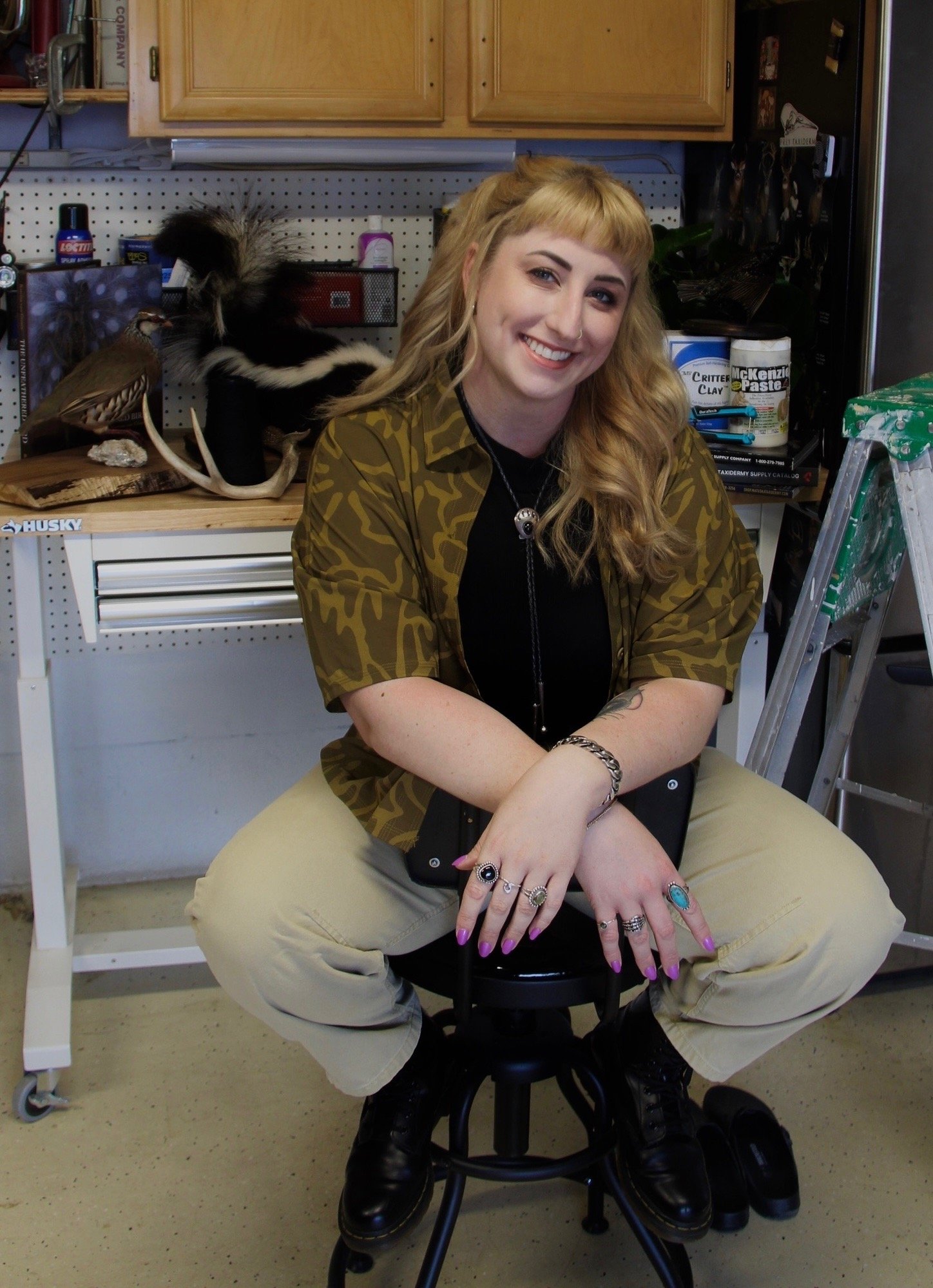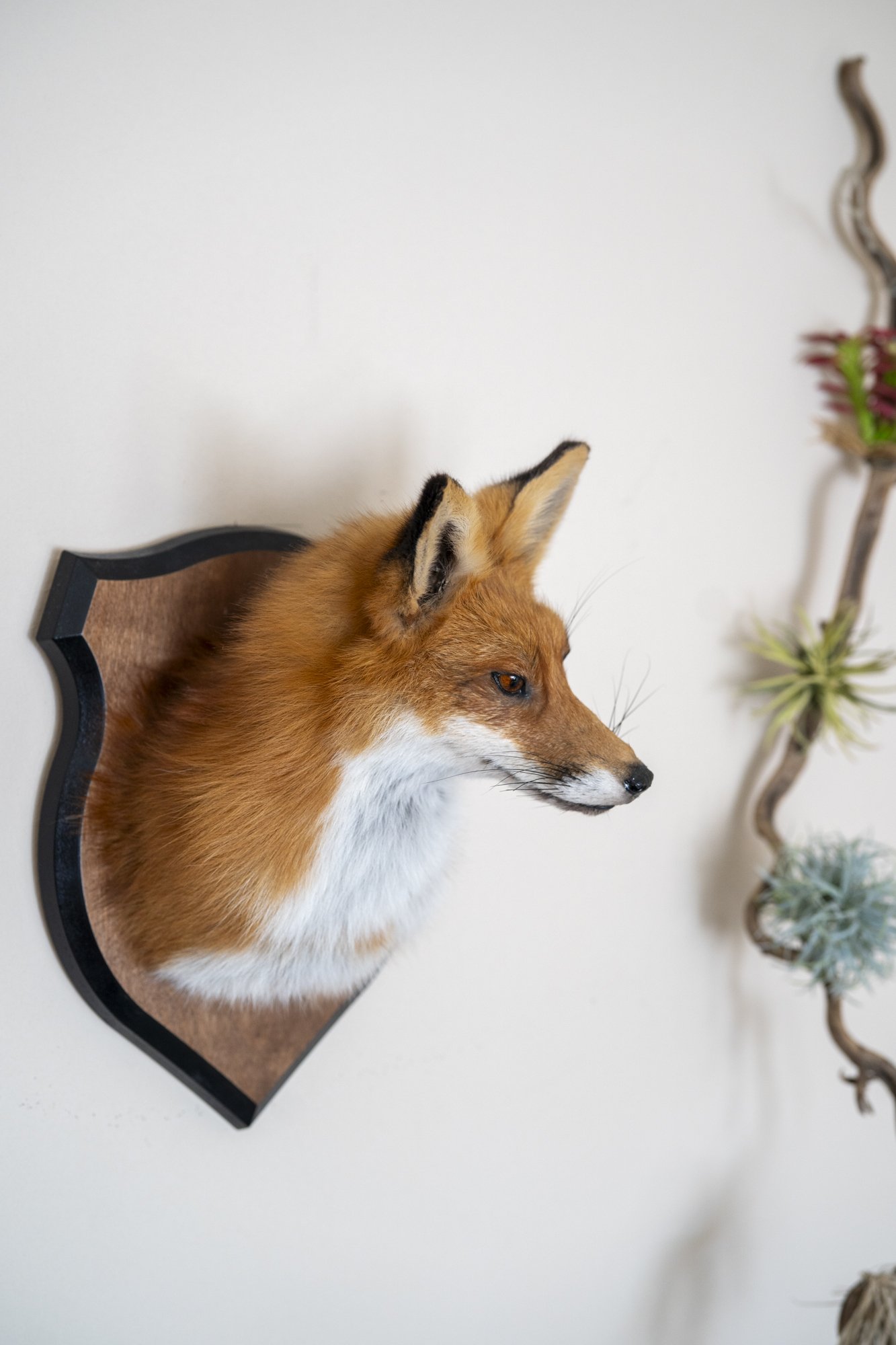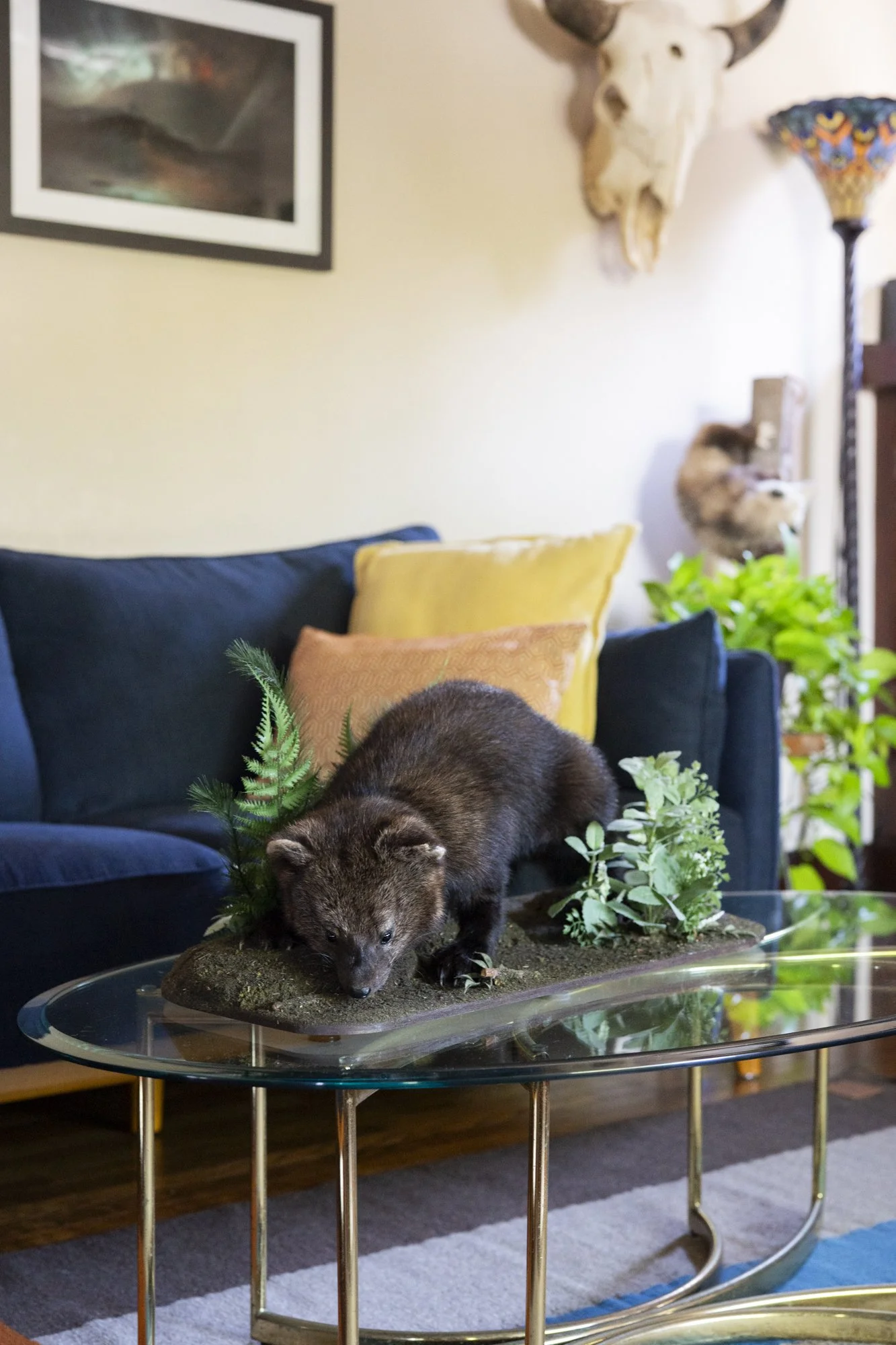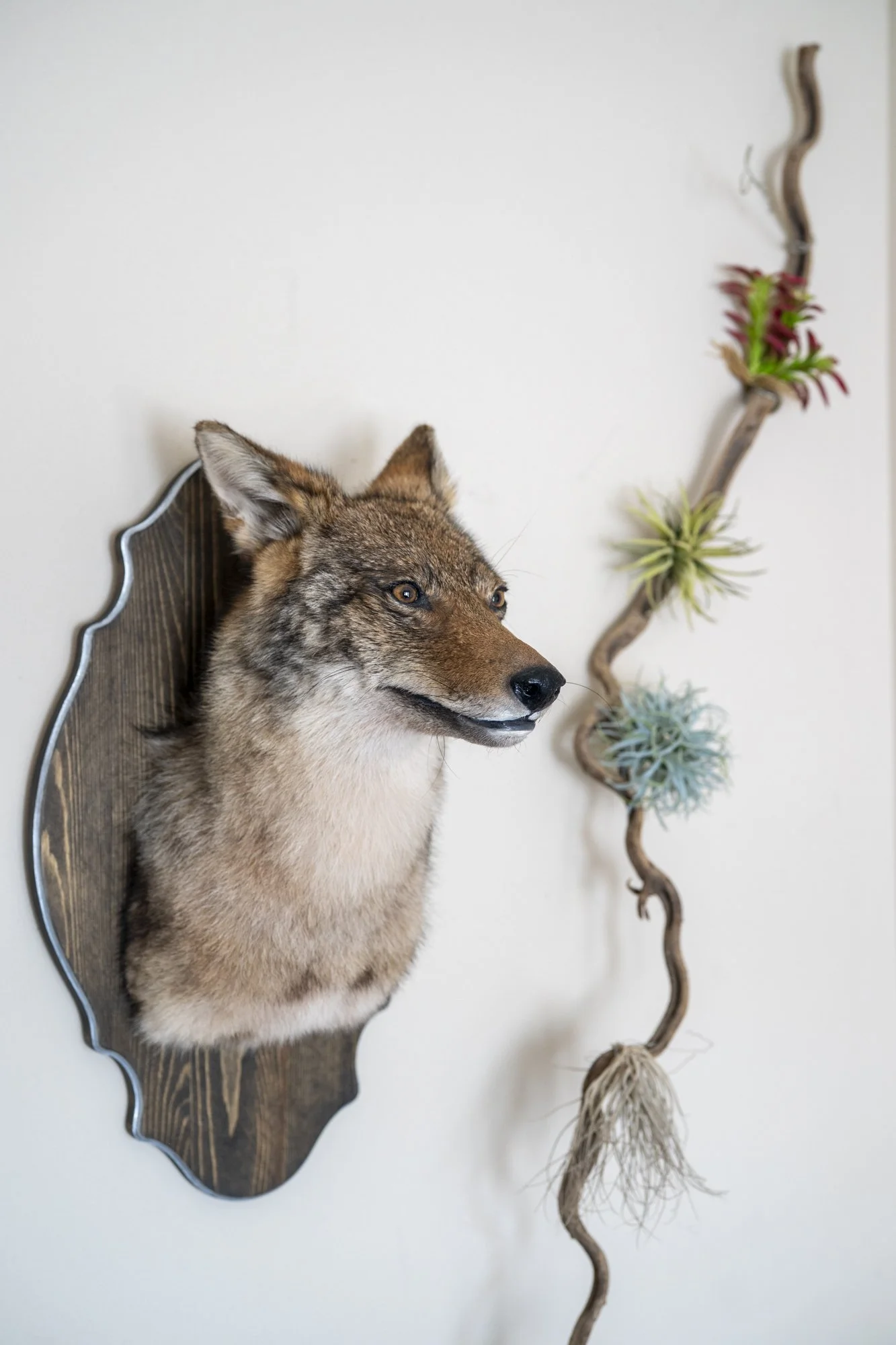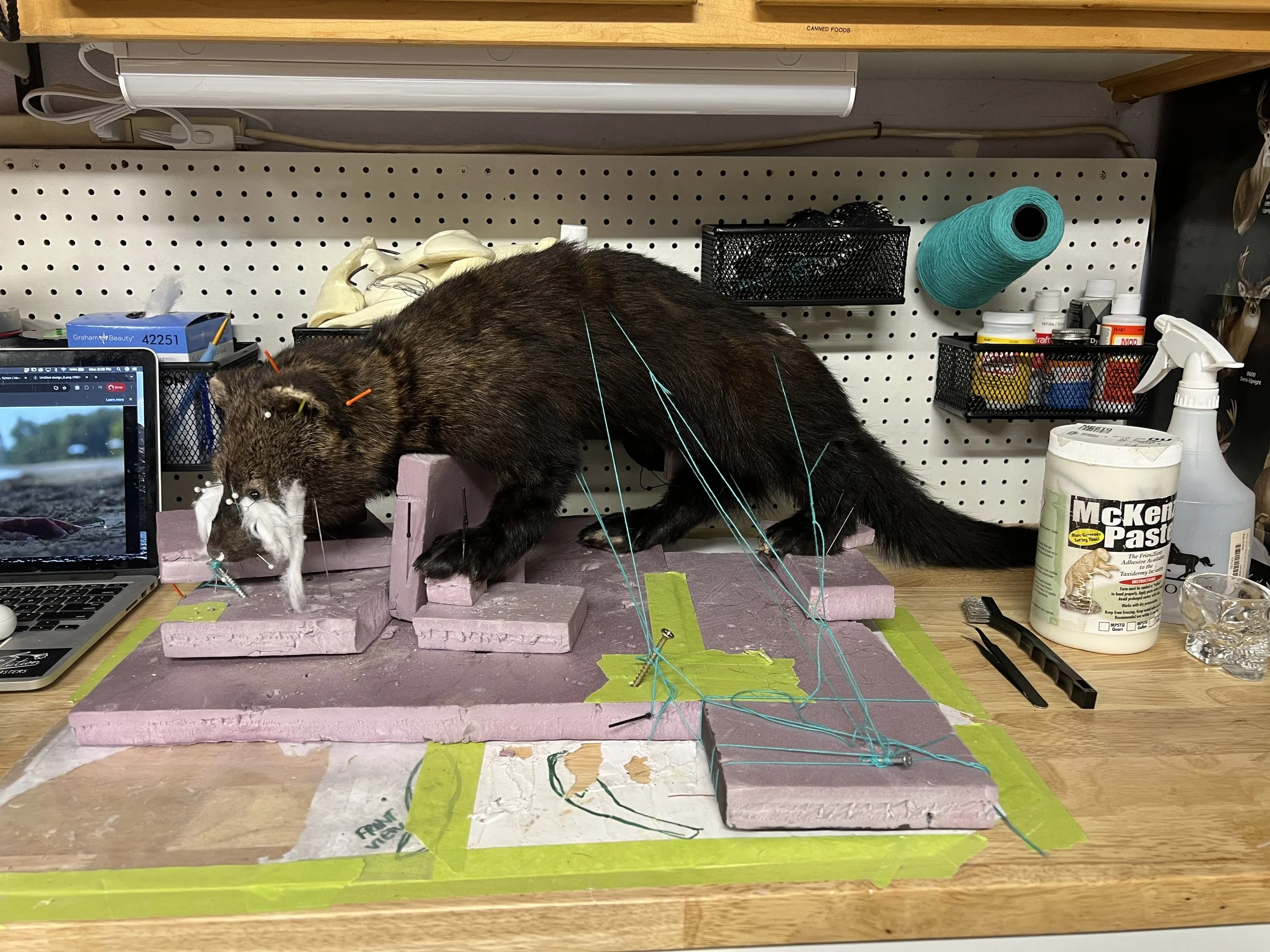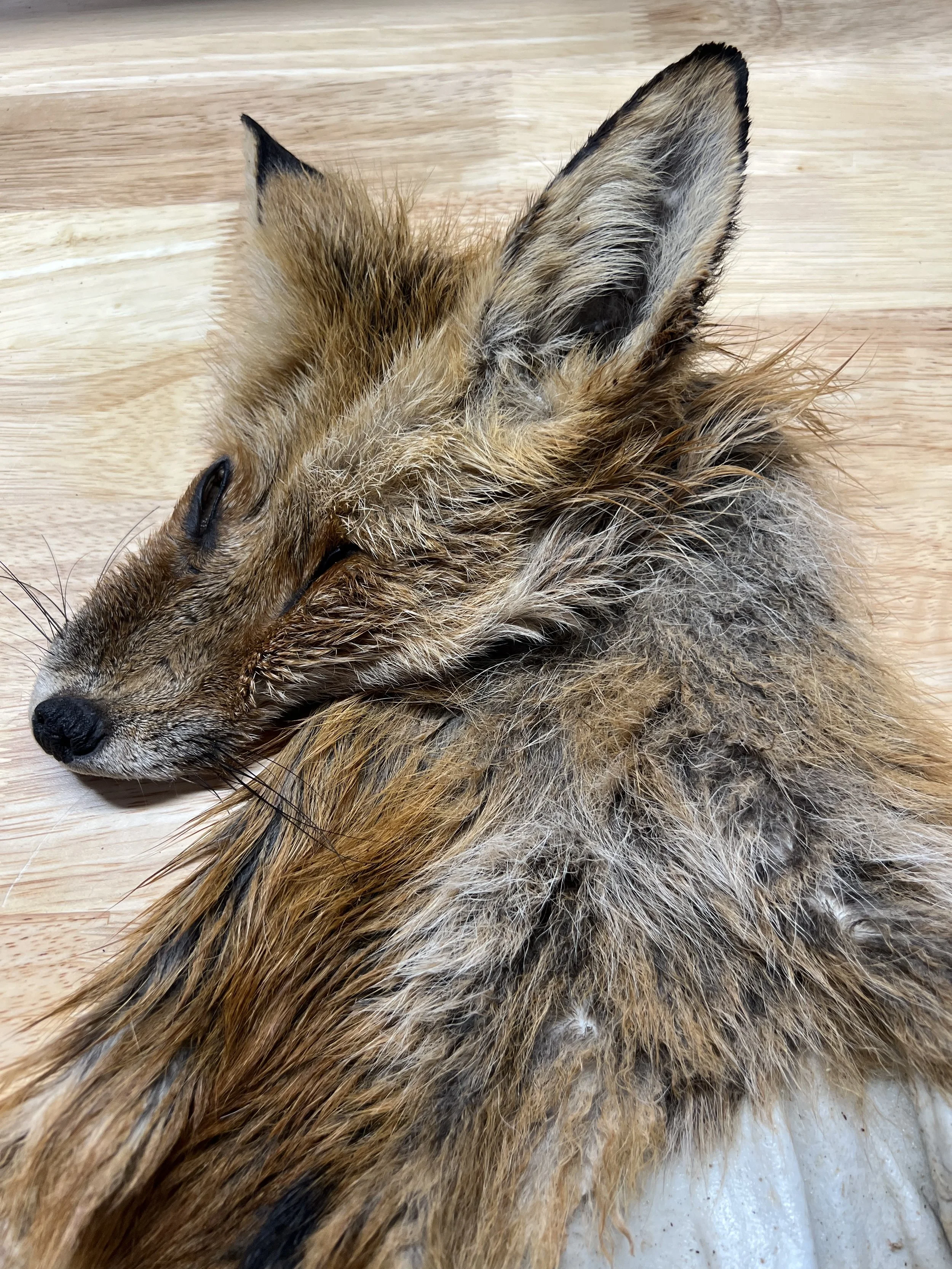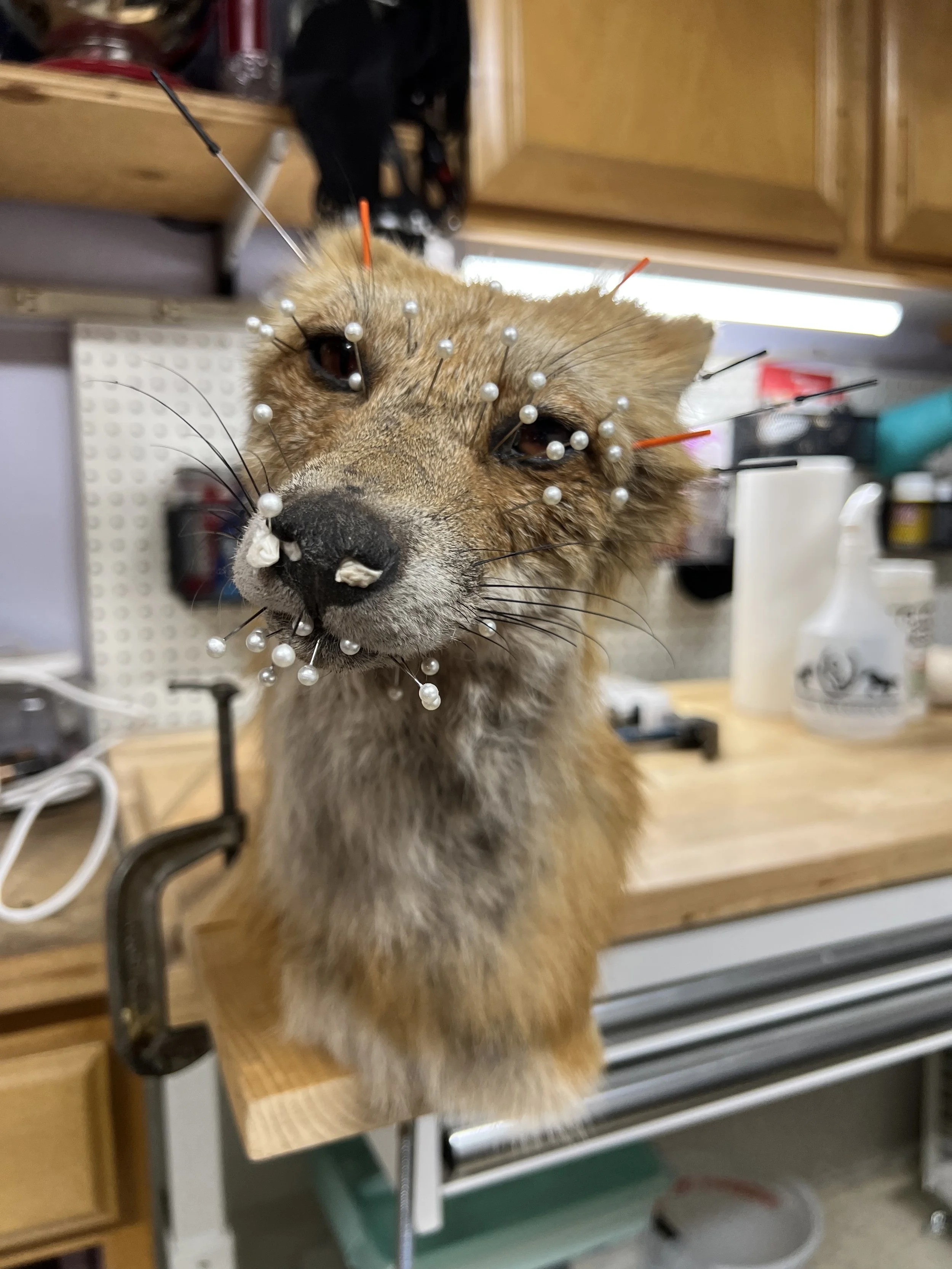Featured Artist: Charlotte Jesse
Charlotte Jesse in her studio with a few examples of the work she has done. Photo provided by Charlotte Jesse.
If you have ever had the joy of meeting Charlotte Jesse, you know she radiates joy, creativity and is quite possibly the funniest person you will ever meet. Strong Taxidermy is proud to introduce Charlotte as our first featured artist on our website. Based in Carlsbad and currently focusing on mammals, she is an incredible artist, and we are so thrilled to be working with her.
Charlotte Jesse has dedicated several years to mastering the art of taxidermy, demonstrating the persistence and passion that define a true professional. Her rapid learning curve and keen attention to detail have allowed her to develop an impressive body of work within her home studio, combining scientific accuracy with artistic expression. This dedication not only highlights her technical skills but also her deep respect for the natural world, making her a standout talent in the growing field of contemporary taxidermy. Charlotte is undoubtedly an artist to watch as she continues to evolve and refine her craft.
You can read her full biography on our Meet the Featured Artists page, where you can read about her background and artistic journey. However, we wanted to take a moment to spotlight her extraordinary artistry and explore the sources of her inspiration. By understanding the influences that shape her work, we gain deeper insight into the unique perspective she brings to each piece, blending scientific knowledge and creative expression in museum-quality taxidermy that honors the natural world.
I wanted to ask Charlotte a few questions about her taxidermy work to gain deeper insight into her creative process and the inspiration behind her taxidermy career. You can read more about her approach and inspirations in this introductory blog, where the emphasis on preserving the natural world through meticulous craftsmanship truly comes to life.
What drew you to the art form?
Weirdly enough, I was drawn to it after watching the documentary Stuffed (2019) sometime in the early pandemic days. I started looking to see where I could learn more, and my research eventually led me to a class at Prey Taxidermy in Los Angeles. I took a two-day beginner birds’ class with European Starlings and was immediately hooked.
Afterwards, they had a two-week course taught in the Italian countryside, and I scrambled all my savings together to be able to go – I learned a lot about taxidermy (and myself) while I was there. I came back and hit the ground running, trying to replicate what I learned on a red fox.
What has pushed you into doing taxidermy on your own? While there are many people who want to take a class or two for a fun experience, you have built a studio, completed many projects on your own, and are building a strong portfolio.
I think I’m chasing the perfect project. I’m a huge perfectionist and my own worst critic, so taxidermy provides the perfect challenge for me to continually improve my skills. I think I also had a bit of beginner’s luck because my first pieces went so well – it feels silly to just stop now.
Check out the first three incredible pieces created by Charlotte Jesse now available on our website. From left to right: a red fox game head (Vulpes vulpes), a full-size fisher mount (Pekania pennanti), and a coyote game head (Canis latrans).
What’s the most challenging part of creating a realistic and lifelike mount?
God, everything feels like a challenge sometimes. My biggest struggle is a good lip tuck, but the eyes are also pretty make or break for a piece. The smallest adjustments can totally alter the expression – like you’ll get one eye just right, only to need to replicate it all over again on the second [eye].
Do you think having such a personal relationship with your horse, TJ, has allowed you to have a better understanding when learning taxidermy?
I don’t think so, at least not super directly with my horse [TJ]. I do think it’s just an extension of my natural curiosity of the natural world. Growing up I was interested in being a veterinarian, and that never truly went away, it just kind of evolved.
Have you had any particularly memorable projects? (This could be a good inspiring one, or a bad one that you learned from)
I mean, attempting to work on a partridge in a small Italian town when it’s 90 outside and the windows don’t have screens is probably one of the most memorable things I’ve done to date.
Realistically, I think the projects I’ve learned the most on would be the things I’ve done at home on my own. For example, I purchased a tanned fisher skin for a life-size mount, which was fully a trial and error until I finally got it right. I also made a very silly decision at the start of that project to do a wrapped body instead of a commercial form.
Can you describe your typical process from start to finish when working on a piece?
I think I’m still working on my typical process besides starting something, and panicking, and eventually seeing it through.
How has your work evolved since you first started practicing taxidermy?
I like to hope I’ve gotten better! I think I’m still working out my style and my process evolves a little bit each time.**
**Editor’s note: she has. Her work is incredible.
Do you see taxidermy as more of a craft, an art, or a science—or a combination? Why?
I’d say it’s a combination of all three. There is art in the creation of the form whether you are sculpting the face or wrapping the body. You have the science of making sure what you’re recreating is true to life; proportions, posture, and expression all come into play. Plus, if you’re skinning something it's literally a gross anatomy lab while you work against the clock as your art actively decays on you.
Taxidermy really is a catch-all discipline that mixes craftsmanship, scientific inquiry, and artistic expression all into one messy, but kick ass process.
Red fox (Vulpes vulpes) tanned cape. Photo provided by Charlotte Jesse.
Completed red fox game head - the pins are used to hold the skin in place as it dries. Photo provided by Charlotte Jesse.
What advice would you give to someone interested in learning taxidermy for the first time?
Don’t panic if you’re working on a bird and it looks like a blob of skin and feathers - the magic happens in the fluff! It also helps to brush up on your local legalities so you’re not breaking any laws. And follow Paloma on Patreon, she has some incredibly helpful content if you’re looking to get started.
What are your goals as a taxidermist?
Right now, I’m just focused on learning as much as I can and continuing to build my skills. I don’t have a set end goal at the moment. I’d love to try submitting work to competitions someday, but there’s no rush. I trust that when the time is right, that step will come naturally.
Where can we find you if we want to follow along your journey?
Find me at @voxcarnistaxidermy or my personal page, @charlottemjesse - That is unless you’re a die hard horse nerd and then I can be found at @equestrianinprogress.
________________
I want to thank Charlotte for her time and dedication to the craft. Sometimes, you can just tell when someone will be a successful taxidermist - and I must say, Charlotte is one to look out for. Charlotte’s artistry embodies a fusion of scientific precision and creative vision, elevating every piece she crafts. Her meticulous attention to anatomical detail, combined with an intuitive understanding of the natural world, brings each specimen to life in a way that captivates and educates. At Strong Taxidermy, we consider ourselves incredibly fortunate to have Charlotte’s exceptional talent and passion as a cornerstone of our studio, continually inspiring excellence and deepening our appreciation for the natural world.

